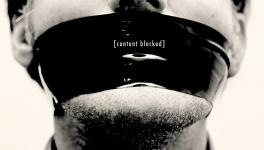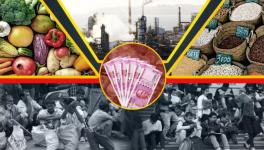High Demand for Gold Loans Indicate Distress Among Low Income Families

Representational Image. Image Courtesy: Pexels
Higher demand for gold loans and subsequent increase in gold loan auctions by the financial institutions indicate the precarious state of finances of Indians especially among the of lower income households in the country. According to data from the Reserve Bank of India, the outstanding loans against gold jewellery given by banks rose by 82% to Rs 60,464 crore as of March 2021, from Rs 33,303 crore as of March 2020.
Similarly, gold loans lent by the non-banking financial companies (NBFCs) increased by about 15% during 2020-21, according to industry estimates.
The pandemic induced economic crisis has left lakhs of households resorting to borrowings against gold items to meet their health and livelihood needs.
Observers say that the increase in gold loans in rural and urban areas are mostly distress loans borrowed by unemployed and lower income families affected due to the pandemic and lockdowns to meet financial emergencies.
Thomas Franco, former general secretary of the All India Bank Officers’ Confederation (AIBOC), said that the increase in gold loans indicates the growing distress among low-income groups.
“Borrowing money through Gold loans is the easiest option available for many people and small businesses. The massive unemployment in the country, the pandemic triggered financial distress and loss of livelihood for lakhs of families due to frequent lockdowns is pushing them into debts,” said Franco.
Also see: 2021: Economy to Suffer from COVID-19?
“As banks are not sanctioning new agriculture loans, many farmers are also mortgaging their gold items to raise money for their agricultural investments,” he added.
Meanwhile, The Print has reported that the high demand for gold loans is likely to continue amid uncertainties triggered by the second wave of COVID-19.
“The demand for gold loans is usually high when the unsecured loans (like personal and group loans) are not available. During periods of uncertainty like this, unsecured loans are not available,” said John Muthoot, chairman of Muthoot FinCorp Ltd, a leading NBFC in gold loan space. He added that the demand for gold loans is especially increasing in the rural belts of Telangana and Karnataka.
As people are failing to meet the debt obligations against gold loans, banks and NBFCs have started auctioning the gold mortgaged with them.
In August last year, the RBI increased the LTV (loan-to-value) ratio on gold loans to 90% from 75% till March 2021. While this encouraged people and small scale businesses to opt for gold loans, a crash in gold prices are now pushing banks and NBFCs to recover money by auctioning gold mortgaged in cases when the borrowers are not able to bring more collateral or repay part of their loans.
The gold prices crashed from a record high of Rs 56,200 per 10 grams in last August to around Rs 45,000 as of March 31 and has now recovered Rs 50,005 on Tuesday.
According to a report titled ‘Gold Loans help India weather the COVID-19 storm' by the World Gold Council (WGC) released in November 2020, “the outstanding organised gold loan is expected to grow to Rs 4,05,100 crore in 2020-21 from Rs 3,44,800 crore in 2019-20”.
Low income families were forced to mortgage their gold ornaments to raise money for their medical expenses for COVID-19 treatment in private hospitals, according to several reports.
Reportedly, as many as 3.8 lakh parents of school going children in Telangana had taken loans to pay the school fee during last academic year.
Also read: COVID-19 Driving Up Unemployment
Get the latest reports & analysis with people's perspective on Protests, movements & deep analytical videos, discussions of the current affairs in your Telegram app. Subscribe to NewsClick's Telegram channel & get Real-Time updates on stories, as they get published on our website.
























